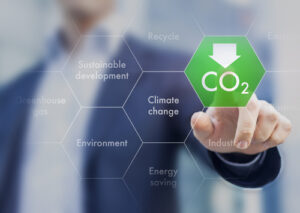The Ongoing Struggle of the Paris Agreement: A Critical Look at Global Climate Commitments

Failure to Meet Climate Goals: An Ongoing Challenge
In a world increasingly focused on climate sustainability, the Paris Agreement was heralded as a game-changer. However, recent evidence suggests a far less optimistic outlook. Despite the commitments from 195 nations, only ten have met the February 10, 2025, deadline for submitting their “nationally determined contributions” (NDCs), crucial plans outlining how each country intends to cut emissions. Alarmingly, this means a staggering 95% of nations still lack coherent strategies to adhere to the required five-year global stocktake (GST) goals.
The Disheartening Reality of Climate Commitments
The Paris Agreement has been in play for ten years and has seen trillions of dollars invested, yet substantial progress remains elusive. Even the United Nations admitted back in 2019 that the structure of the Paris Agreement was inherently flawed and likely doomed to fail. To illustrate the severity of the situation, if every nation fulfilled its pledges to the letter, we would still fall two-thirds short of the necessary reductions needed. Projections indicate that regardless of compliance, global temperatures could rise by 3 degrees Celsius by 2100. This scenario raises an important question: why do nations remain invested in an agreement that appears disconnected from tangible environmental realities?
Dissecting the Global Stocktake Process
The GST is separated into three phases: data collection, technical assessment, and evaluation of outputs. To date, over 170,000 pages of documents have been compiled along with 252 hours of meetings, yet the trend remains clear—many nations are failing to meet their objectives. Of the few who did comply, the United States and the United Kingdom were the only G7 nations to submit viable plans. Interestingly, the U.S. presented its strategy prior to withdrawing from the Paris Agreement under the Trump administration, raising questions about America’s enduring financial role in global climate initiatives.
Who Is Truly Committed?
The nations that met the recent deadline included Brazil, the United Arab Emirates, New Zealand, Switzerland, Uruguay, Andorra, Ecuador, and Saint Lucia; however, the United Nations warned that the plans from the UAE, Brazil, and Switzerland did not align with achieving the 1.5°C target by 2035. The UK has been flagged as "potentially on the right track," but only under the condition of increased investment to assist other nations in meeting their goals—obviously a role once filled by the U.S.
The call for dedicated financial efforts cannot be overstated. As the Centre for Science and Environment succinctly put it, without substantial investments, the ambitious renewable energy targets will remain unreachable.
The Reality of Pledges and Performances
It’s easy for nations to issue pledges and appeal to the climate activist community, but the follow-through often falls short. Expectations primarily rest on those countries that have the financial resources, leaving many others off the hook. Notable countries known for their grand climate ambitions, like Australia and Canada, are now holding back their GST plans until after elections—an apparent political strategy to leverage climate action as a bargaining tool.
Conclusion: The Road Ahead
For climate action to be meaningful, accountability must replace empty promises. The global economic landscape is rapidly shifting, and it is imperative that countries act decisively rather than merely paying lip service. Nations keen on preserving the integrity of the Paris Agreement must strive for genuine, measurable progress rather than superficial pledges that serve only to placate international scrutiny.
At Extreme Investor Network, we believe in the power of informed investment choices that prioritize sustainability while fostering genuine accountability. As we navigate through complexities of climate policy and economic impact, our insights aim to help you not only understand these challenges but also position your investments wisely in an evolving global landscape.
Stay tuned to our blog for ongoing analysis and in-depth coverage on climate economics and investment opportunities that aren’t merely another promise—but the potential for real change.

